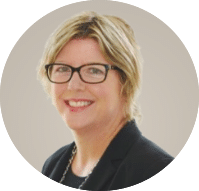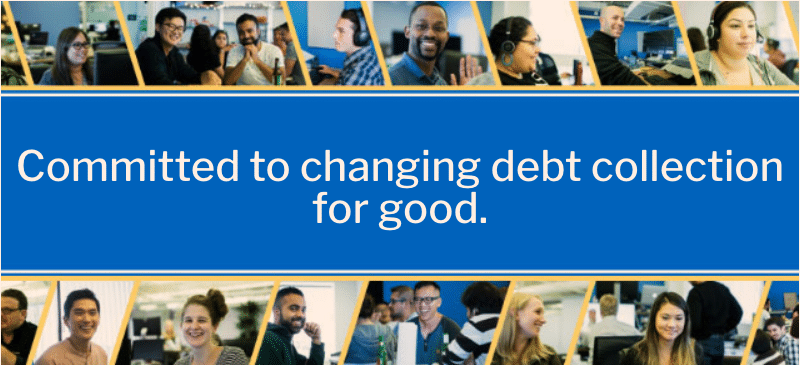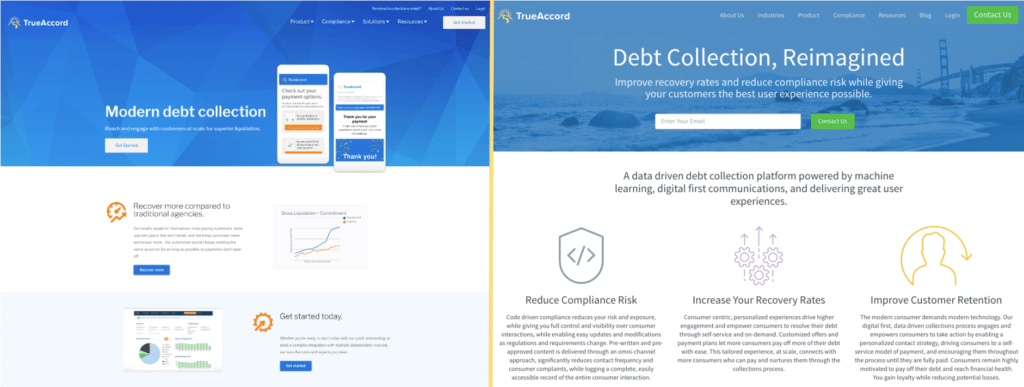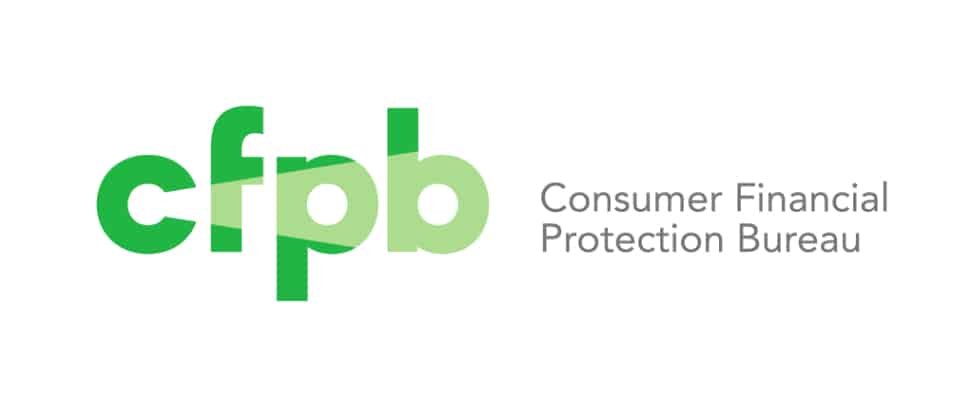
TrueAccord is redefining the collections industry, and the fastest way to do that is by building the best teams. I sat down for a conversation with Tobias Campbell, a former operations manager at a payday and installment loan company in charge of in-house collections—and our team’s newest Account Executive—to discuss his experience in the industry, what challenges he faced in traditional collections (including falling right party contact rates and high employee turnover), and why he decided to join TrueAccord.
Welcome to the team! Before we dive in, could you tell us a little about your experience in finance and how your career led you into the collections space?
Prior to my start in collections in 2016, I worked at a large bank in the retail and private banking investment portfolio space. When I had the opportunity to transition to the consumer finance industry working in-house as an operations manager for a larger consumer lending company I wanted to take the chance despite collections’ negative reputation. I knew there had to be a better way to get in touch with consumers and change that perception.
What was your focus as an operations manager when you got started?
Initially, I spent time listening to agent calls and getting a clear sense of how they engaged with customers, and I was really determined to improve our right party contact rate. I helped transform the training process for agents to use more of a sales approach.
We still coached the team on building rapport with the consumers they were reaching, but also leveraged sales strategies in an effort to increase our overall performance. Beyond new training strategies for our agents, we started to dabble a little in sending emails, but they were basic drip campaigns consisting of a few manual emails per person.
The small changes added up, and we were able to double our right party contact rates. But ultimately those improvements were marginal. Calling to collect wasn’t sustainable and the law of diminishing returns started to kick in, especially as we ran into more call blocking apps and services.
So when training smoothed out, what were some of the other challenges you were running into?
Two of the biggest ones we were facing were agent turnover and trying to keep up with the volume of accounts we were managing. We had to bring new agents on pretty frequently because of the high turnover rates. When agents first start there’s an element of excitement because they’re ready to start their new job. They can make a difference. They’d start off strong, but then we’d see those same people burnout in three to six months.
TrueAccord was performing 7 times better than our internal team, and that’s including the service fee that we were paying
It’s a very difficult job. Anyone that’s ever worked in collections knows that even if you manage to get a consumer on the phone, especially with an account that’s been delinquent for more than six months, the likelihood of securing that payment is slim. It’s hard to keep agents motivated and excited through that. Plus, there’s the compliance piece.
Having the technology in place to ensure your agents meet all of the compliance obligations is a daily struggle. No matter the number of tools available, the amount of compliance training, or the level of oversight, there is always the chance for human error when you have live agents on the phone.
At the same time, we realized that we were just getting too big, and our internal team could not handle our volume, especially with a declining RPC rate. We had our entire collection strategy in-house for so long, so we looked at our numbers, and the further accounts went into delinquency, the harder and harder it got to reach them. There was a need for a partner that could help us in the late-stage space.
Our CEO at the time knew Ohad [Samet, the Founder of TrueAccord] and he saw what TrueAccord was doing—leveraging technology and email, which we weren’t really using—so we decided to send over any accounts that went beyond 120 days. We kept 10% of that paper ourselves so that we could compare effectiveness rates between the mostly digital and the call-to-collect strategy.
What did that comparison look like?
The change was night and day. After six months, we saw that TrueAccord was performing on par with our internal team’s historic performance on those portfolios, but [TrueAccord’s machine learning engine] Heartbeat kept going. At twelve months, TrueAccord was recovering twice as much as we were on a percentage of outstanding debt, and by the time I left in early 2020, TrueAccord was performing 7 times better than our internal team, and that’s including the service fee that we were paying TrueAccord.
We had customers that would get on the phone with an agent, and they would say “hey, can you send me to TrueAccord?” They would regularly talk about having more options, more flexibility, and the most common one was “they don’t call me 3, 4, 5 times per day!”
When you started to see the difference between TrueAccord and your internal team, was there any plan to try and update your practices to something more in line with what TrueAccord was doing?
We saw consumers gravitating toward digital communications over phone calls, so we recruited a product manager to research and build a digital strategy in house. There was some conversation around improving our email messaging by making the tone softer, since our current emails felt very businesslike and, well, boring?
There was a lot of talk around needing to make these substantial changes, but we didn’t know how. We didn’t have the infrastructure in place, we wouldn’t be able to automate content personalization the way TrueAccord does. Plus, the costs needed to develop the solution were a barrier to entry, especially when we already had a partner providing those services successfully. I decided that I wanted to join TrueAccord because I saw that unfolding, and I knew that TrueAccord had a differentiated product: a flywheel for this industry.
If you had to offer a final takeaway piece of advice to other lenders doing in-house collections, what would you tell them?
Don’t lose sight of the backend of the business from a revenue perspective. There is typically an intense focus on attracting new consumers to the product, and we start to forget about previous customers that still owe money on their account.
I would advise other managers in the collections space to think about building a digital line of defense, especially in preparation for a downturn or recession. When consumers are in a difficult situation, digital approaches can better connect with them and will lead to more dollars recovered.
Are you ready to invest in a sustainable digital infrastructure? Get in touch with our team today!






